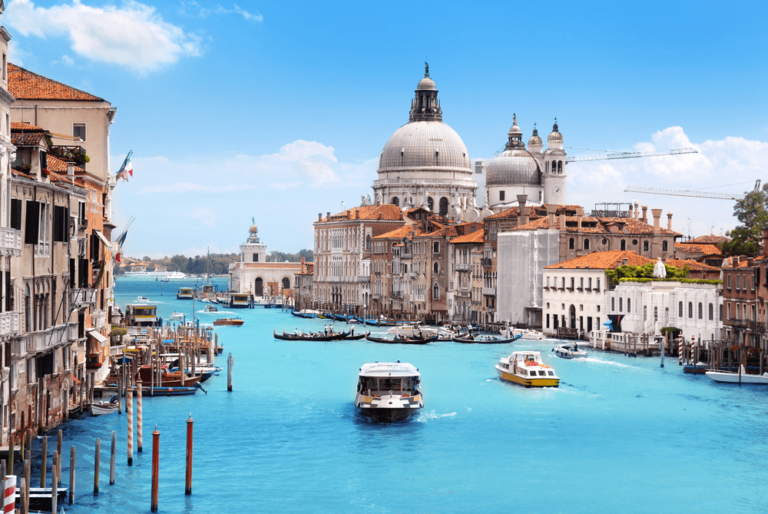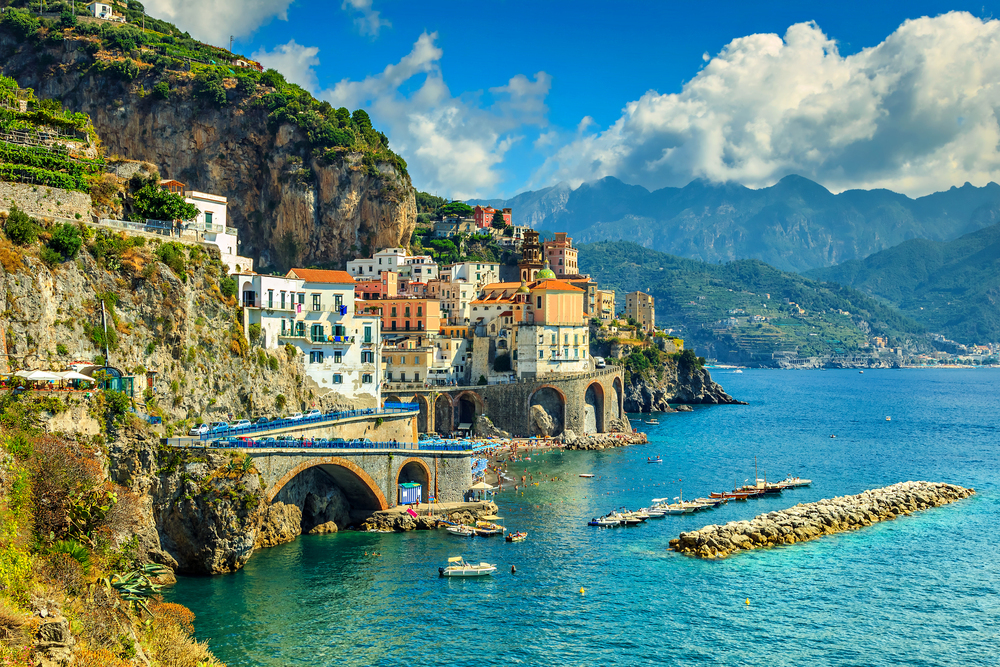
Some places grab you the moment you arrive—and Italy is definitely one of them. It’s not just the history, food, or stunning views; it’s something you feel. Imagine sitting in a cozy little wine bar in Florence, walking along quiet canals in Venice at night, or having a meal in Rome that tantalizes your tastebuds long after you leave. These are the moments that make traveling here unforgettable, and here is a 7-day Italy itinerary to make it all happen!
We just spent seven days traveling through Italy, and every part of it felt alive. One moment, we were standing on a clifftop in Positano, watching the waves roll in; the next, we were in a tiny family-run trattoria, sipping wine while an old Italian couple danced to a live accordion player. Some places look beautiful in pictures, but Italy is different—you have to be there to understand it.
What made this trip even better? The small surprises. The boutique hotel in Rome had more charm than any five-star resort. A tiny café in Florence where a local chef served up the best plant-based pasta we’ve ever had. A remote beach in Capri where the only sound was the water going against the cliffs.
For travelers looking to experience Italy the right way, we’ve put together a detailed itinerary with the best places to stay, divine restaurants, and experiences you won’t want to miss. If you’re planning your own trip, Reliabletraveler is a great place to find expert recommendations, first-hand travel stories, and insider tips to make your visit even better.
Italy is romantic, effortless, and completely unforgettable. In this seven-day journey, we’ll show you how to experience it to the fullest.
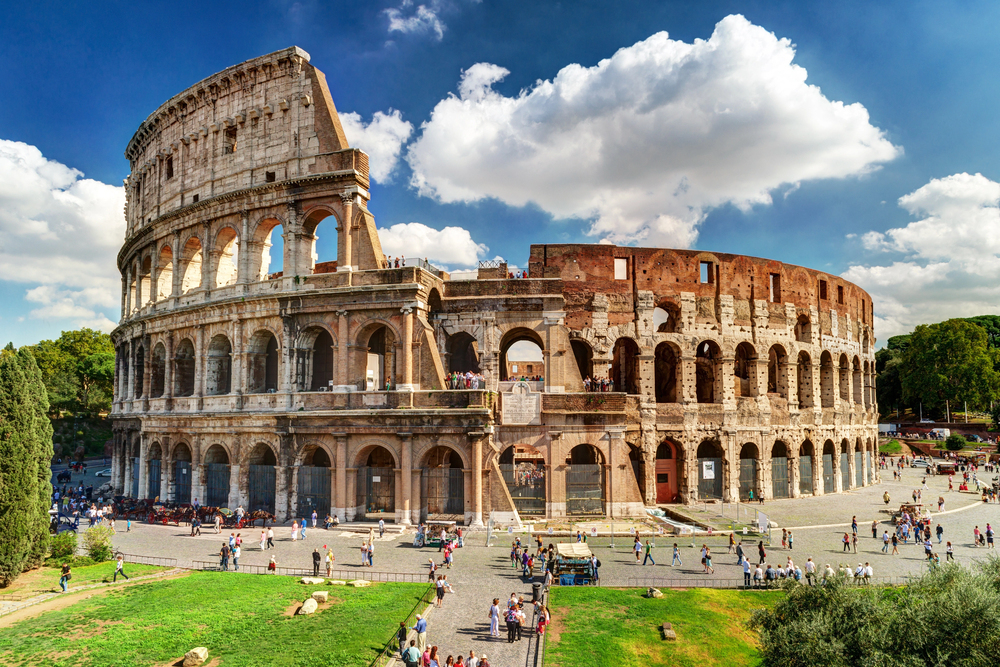
The second we step off the plane in Rome, we felt the cit has its own energy. One minute you’re walking past ruins that have been here for thousands of years, the next, you’re squeezing into a tiny café where locals are casually sipping espresso like they’ve got all the time in the world. Rome moves at its own pace—fast, slow, chaotic, relaxed—all at the same time, and somehow, it just works.
Day 1: Arrival, Trevi Fountain & Rome’s Buzzing Piazzas
I start my first afternoon in Rome at the Trevi Fountain. Sure, it’s a tourist magnet, but there’s a reason for that. The white stone sculptures, the rush of cascading water—it’s the kind of place that makes you stop for a second and just take it in. We toss a coin over our shoulder (because, hey, tradition) and watch it disappear into the turquoise water before heading off.
From there, we wander toward Piazza Navona, one of the liveliest squares in Rome. Artists set up their canvases, vendors sell paintings of the Colosseum, and the air is thick with conversation and the occasional clatter of plates from the restaurants lining the square. We grab a quick coffee at Caffè Sant’Eustachio, a tiny café that’s been perfecting its roast since the 1930s. It’s strong, smooth, and exactly what we need before diving into the next stop.
Day 2: Walking Through History – The Colosseum & Roman Forum
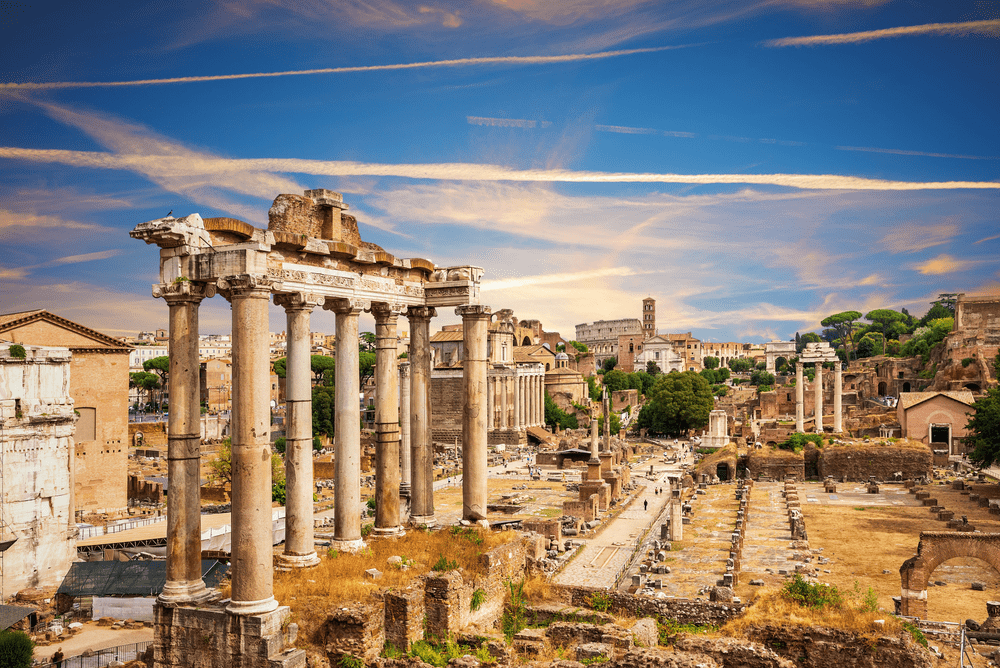
On my second day in Rome, we start with one of the city’s most famous landmarks—the Colosseum. Seeing it up close, the sheer scale is overwhelming. We book a small group tour (highly recommend) and step inside, walking through the underground tunnels where gladiators once stood, waiting for their turn in the arena. The guide shares stories about how this place once held over 50,000 roaring spectators, and for a moment, you can almost hear the echoes of the past.
From there, we head toward the Roman Forum, the former heart of ancient Rome. It’s a mix of towering columns, half-standing temples, and worn cobblestone paths leading to stories of emperors, gods, and daily life from centuries ago. Unlike a museum, where history is kept behind glass, this is a place you walk through, touch, and experience firsthand.
For lunch, we found a cozy spot at Ginger Sapori e Salute, a sustainable restaurant that specializes in organic Italian dishes. Fresh salads, homemade pasta, and cold-pressed juices—light but full of flavor, perfect for a mid-day break.
The afternoon is spent exploring Trastevere, one of Rome’s most charming neighborhoods. With its cobblestone streets, colorful houses, and lively piazzas, it’s easy to see why this area is a favorite among both locals and visitors. We stop by Giselda, a café that serves some of the best vegan pastries we’ve ever had, before ending the day at a rooftop bar, watching the sunset over the city.
Day 3: Vatican City & Sunset Views
On my final day in Rome, we cross the Tiber River to visit Vatican City—home to St. Peter’s Basilica, the Sistine Chapel, and the Vatican Museums. The sheer scale and beauty of these sites are breathtaking. Standing inside St. Peter’s Basilica, staring up at Michelangelo’s dome, it’s impossible not to be inspired.
After a few hours of exploring, we take a break at Flower Burger, a fully vegan burger spot that’s been making waves in Rome’s food scene. It’s colorful, creative, and surprisingly good for plant-based fast food.
As the sun starts to set, we make our way to Pincian Hill Terrace in Villa Borghese. If there’s one place to watch Rome bathe in golden light, this is it. The rooftops stretch as far as the eye can see, and couples gather along the railing, soaking in the view before the city lights flicker on.
Dinner is at Aroma, a Michelin-starred restaurant with an insane view of the Colosseum. The atmosphere is intimate and perfect for honeymooners and couples looking for that unforgettable dining experience. They also offer a full vegan menu and focus on sustainable ingredients, making it a guilt-free indulgence.
Walking back through the softly lit streets, we realize something—Rome isn’t just a city you visit, it’s a city you feel.
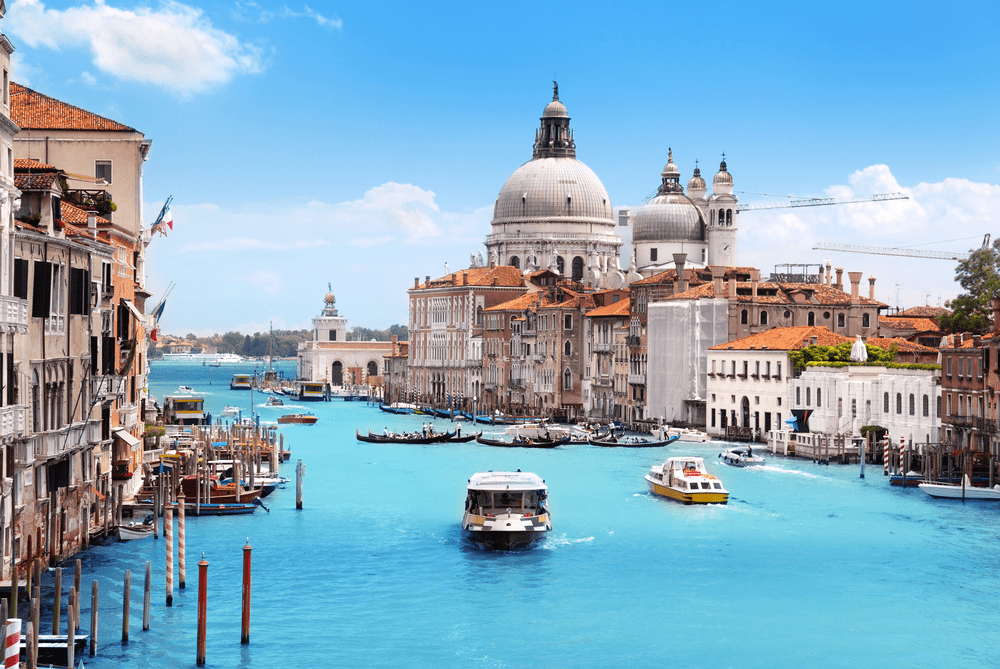
After three packed days in Rome, we hop on a high-speed train to Venice. The ride itself is smooth, passing through rolling hills and sleepy Italian towns. But the moment we step out of Santa Lucia Station, it’s like entering another world. Instead of honking cars and busy streets, there’s water everywhere—boats replacing taxis, gondoliers navigating narrow canals, and old buildings with their foundations dipping right into the lagoon. It’s chaotic, historic, and a little surreal—but in the best way.
Day 4: Exploring the Grand Canal, St. Mark’s, and Venice’s Hidden Corners
I check into Ca’ Sagredo, a hotel that’s part museum, part palace, and fully Venetian. It’s a restored 15th-century building right on the Grand Canal, with ceilings so intricately painted it feels like a Renaissance masterpiece. More importantly, it’s part of Venice’s sustainability efforts, helping to preserve the fragile balance between tourism and conservation.
First stop? St. Mark’s Square. It’s the heart of the city, always buzzing with energy—tourists snapping photos, pigeons fluttering around, and cafés filled with people sipping espresso at tiny tables. St. Mark’s Basilica, with its domes and gold mosaics, is even more impressive in person, while Doge’s Palace next door gives a glimpse into the city’s former rulers and their lavish lifestyles.
Instead of climbing St. Mark’s Campanile for the classic Venice skyline view, we take the locals’ tip and head to San Giorgio Maggiore. Fewer crowds, the same panoramic view, and a much quieter moment to soak it all in.
By afternoon, we finally cave in and take a gondola ride. Some say it’s a tourist trap, but honestly? Gliding through the smaller, quieter canals is where Venice really feels magical. Away from the crowds, you pass centuries-old houses, wooden shutters barely holding on, and balconies overflowing with flowers. The gondolier, who’s clearly done this a thousand times, still manages to crack jokes while expertly steering under low bridges.
Dinner is at Osteria La Zucca, a cozy, vegetarian-friendly spot that proves Italian food isn’t all about meat. Their pumpkin flan and homemade pasta are so good we don’t even think about missing a traditional meat dish.
Day 5: Murano & Burano – The Islands Beyond the Canals
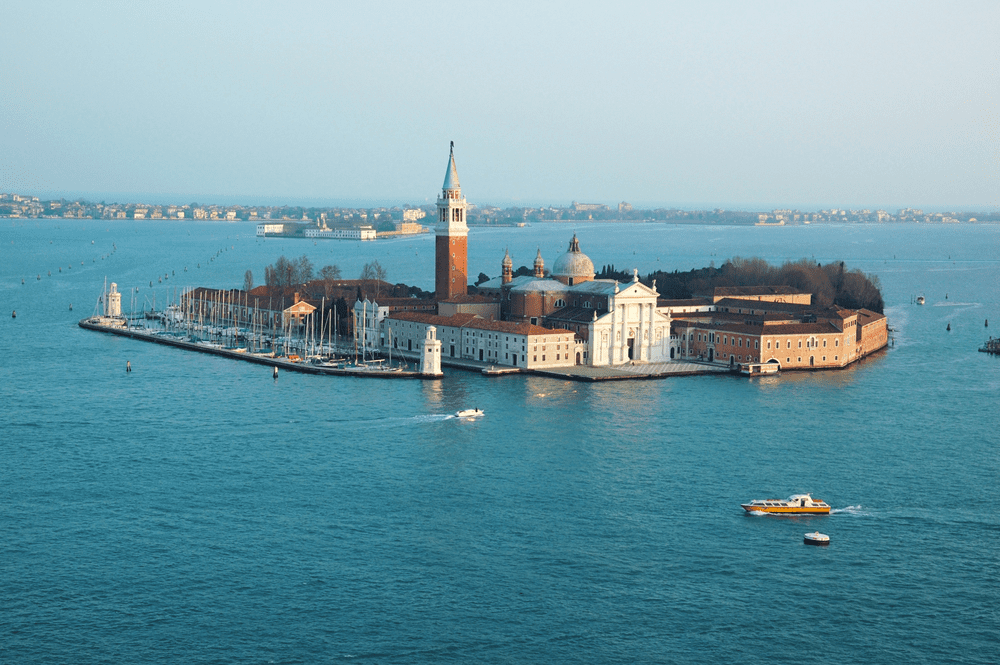
While most visitors stick to Venice’s main attractions, the real gems are just a short boat ride away.
First up is Murano, the island famous for its handmade glasswork, a craft that dates back over 700 years. Venice’s glassmakers were moved here in the 13th century to prevent fires from breaking out in the city (and, let’s be honest, to keep their trade secrets safe). Today, the tradition is still alive, with small studios and family-run workshops lining the canals.
I visit Vetreria Artistica Colleoni, where glassblowers work in front of open flames, shaping delicate vases, intricate chandeliers, and impossibly thin glass figurines. Watching them work is mesmerizing—it takes just minutes to transform molten glass into something beautiful, but years of training to master the craft.
After Murano, we take the vaporetto to Burano, a small fishing island that looks like it was painted with a box of crayons. Every house is a different shade—bright yellows, deep blues, and fiery reds—originally painted that way so fishermen could spot their homes even in thick fog. The island is also famous for its handmade lace, a craft that dates back to the 1500s.
I stop for lunch at Trattoria al Gatto Nero, a family-run spot that serves up some of the freshest seafood in the lagoon. The owner tells me that Burano is one of the last places where fishermen still use traditional techniques passed down for generations. It’s a reminder that beyond the tourist crowds, Venice’s islands still hold onto their old ways of life.
Back in Venice, we wander through Dorsoduro, a quieter, artsier neighborhood that feels miles away from the chaos of St. Mark’s. Here, small wine bars spill onto the streets, Cicchetti (Venetian tapas) is served on wooden boards, and the whole place has a relaxed, lived-in feel.
As we sip a glass of Venetian spritz, watching the sun dip behind the terracotta rooftops, we get why this city leaves such an impression on people. It’s not just the gondolas or the canals—it’s the way Venice makes you slow down, wander, and just take it all in.
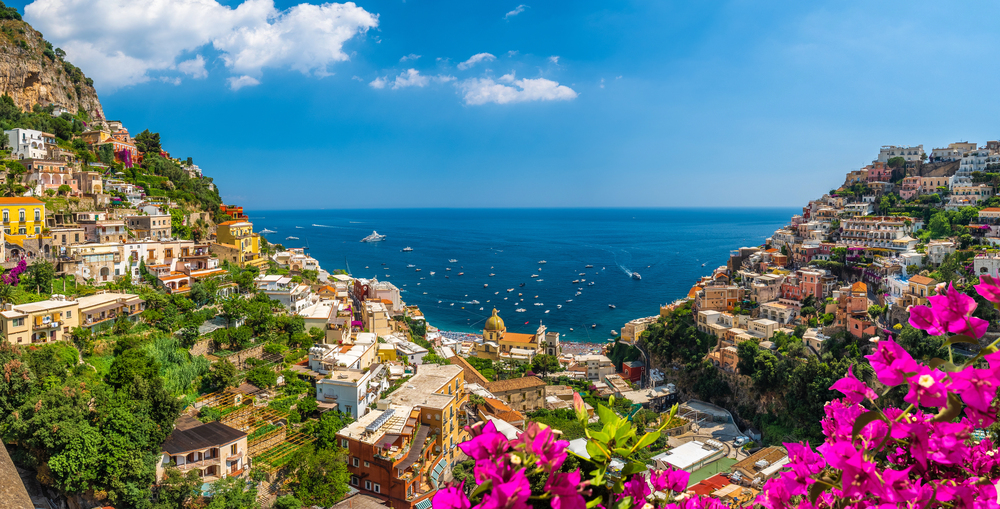
After soaking up the magic of Venice, we board a flight to Naples and take a winding coastal drive towards the Amalfi Coast. The road itself is an adventure—hairpin turns, dramatic sea cliffs, and tiny villages clinging to the edge of the mountains like they’re defying gravity. From the moment we arrive, we get it—this place is pure, effortless beauty.
Day 6: Positano & The Path of the Gods
We based ourselves in Positano, a postcard-perfect town that looks like it was built for honeymooners. Pastel-colored houses stack up the cliffside, tiny alleyways lead to hidden cafés, and the entire town smells like fresh lemons and sea breezes.
We check into Le Sirenuse, one of the Amalfi Coast’s most famous hotels. It’s elegant but laid-back, with a strong focus on sustainability—from plastic-free initiatives to a menu built around locally sourced ingredients. The balcony view? Straight out of a dream.
Hiking the Path of the Gods
Instead of spending my first day lounging on the beach (tempting), we decide to take on the Sentiero degli Dei—aka the Path of the Gods. It’s one of the most famous hiking trails in Italy, running high above the coastline with panoramic views that make every uphill step worth it.
The trail is about 7km long, starting in Bomerano and ending in Nocelle (just above Positano). Along the way, we pass tiny stone cottages, lemon groves, and mountain goats standing in places we wouldn’t dare attempt. At one point, we stop at a lookout where the entire Amalfi coastline stretches out beneath me, and we have to remind myself that this is real.
For lunch, we stop at La Tagliata, a family-run restaurant perched on the cliffs, where everything they serve comes from their own farm. The owner, an older Italian woman, insists we try her homemade pasta. We don’t argue. It’s hands-down the best meal of the trip.
After hiking, we head back down to Spiaggia Grande, Positano’s main beach. The pebbled shore is lined with colorful umbrellas, and the water is that perfect shade of Mediterranean blue. We cool off with a quick swim before grabbing an aperitivo at Franco’s Bar, just in time to watch the sun sink into the sea.
Day 7: Amalfi, Ravello & The Most Scenic Drive of My Life
On my last full day, we explore two more Amalfi gems: Amalfi Town & Ravello.
I start in Amalfi, the town that gave the coastline its name. It’s smaller and less dramatic than Positano but full of history. The centerpiece is Duomo di Sant’Andrea, an 11th-century cathedral with a grand staircase leading up to its mosaic-covered façade. Amalfi is also famous for its paper-making tradition, so we pop into the Museo della Carta to see how they’ve been making handmade paper here for centuries.
From there, we take the bus up to Ravello, a peaceful hilltop town known for its gardens and jaw-dropping views. The highlight? Villa Cimbrone, a historic villa with the famous Terrace of Infinity—a long balcony that feels like it’s floating above the sea. The view is endless, and for a second, the world just stops.
A Farewell Feast at a Cliffside Ristorante
For our last meal on the Amalfi Coast, we head to Il Flauto di Pan, a restaurant tucked inside the gardens of Villa Cimbrone. It’s a slow-food experience where each dish feels like a work of art. We go for the vegan-tasting menu, which includes fresh pasta, grilled seasonal vegetables, and a lemon sorbet made from Amalfi’s famous citrus.
With the twinkling lights of the coastline below, we can’t think of a better way to end this trip.
Final Thoughts on this 7-day Italy Itinerary
Seven days, three incredible destinations, and enough memories to last a lifetime. Rome, Venice, and the Amalfi Coast each had their own magic, but together, they created a journey that felt like the best of Italy wrapped into one adventure. Would we do it all over again? In a heartbeat. For more information and planning tools for Italy, check out our friends at ReliableTraveler.

